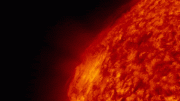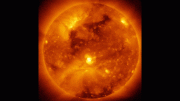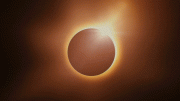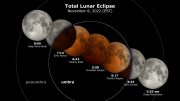
On Sunday, February 11, 2018, NASA’s SDO saw a total solar eclipse in space. These images were taken in a wavelength of extreme ultraviolet light, a type of light that is typically invisible to our eyes, but is colorized here in purple. Credit: NASA’s Goddard Space Flight Center/SDO/Joy Ng
On Sunday, February 11, 2018, NASA’s Solar Dynamics Observatory, or SDO, saw a total solar eclipse in space when Earth crossed its view of the Sun. Also known as a transit, Earth’s passage was brief, lasting from 2:10 a.m. to 2:41 a.m. EST and covering the entire face of the Sun.
So marks the beginning of SDO’s eclipse season — as well as the mission’s eighth launch anniversary. SDO’s eclipse season is a three-week period that comes twice a year near the equinoxes during which Earth blocks SDO’s view of the Sun for a short while each day. The eclipses are fairly short near the beginning and end of the season but ramp up to 72 minutes in the middle. Most spacecraft observing the Sun from an orbit around Earth have to contend with such eclipses. SDO’s orbit is designed to maximize the amount of data the spacecraft can send back to Earth, but twice a year Earth gets in the way of the spacecraft’s view. The spring eclipse season began on February 10 with a partial eclipse and concludes March 5, 2018.









Be the first to comment on "NASA’s Solar Dynamics Observatory Views Total Solar Eclipse"